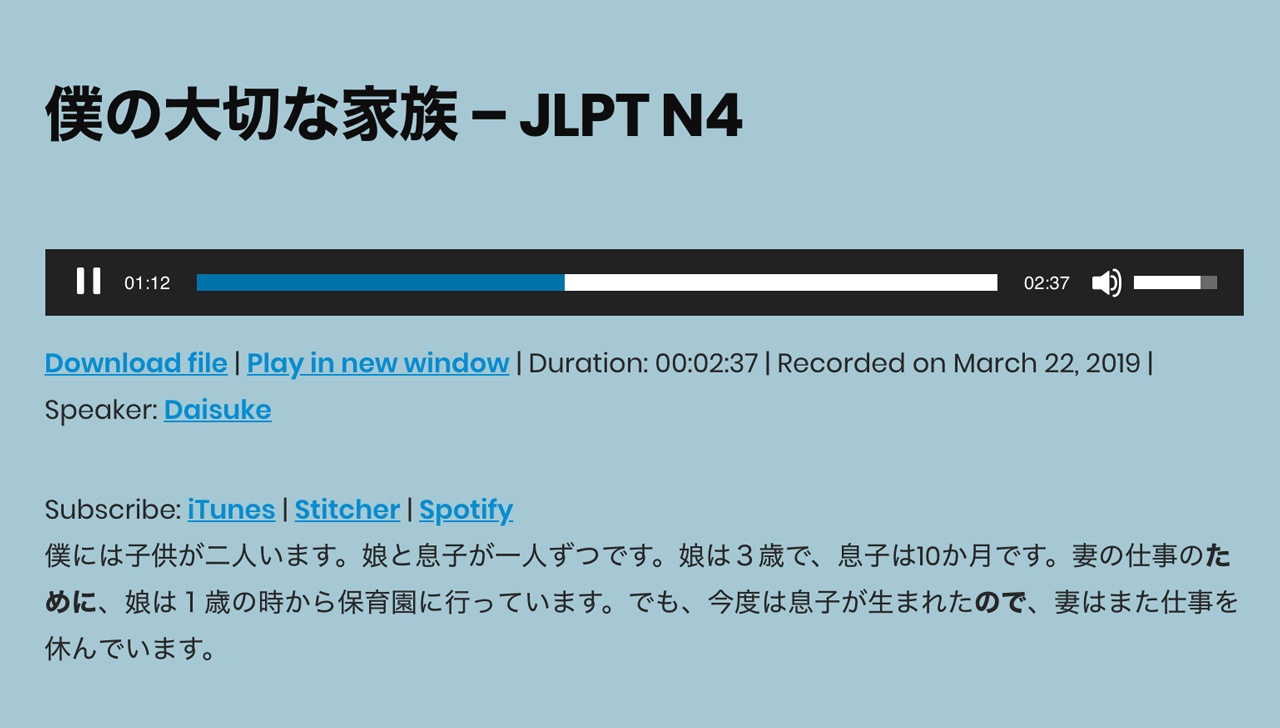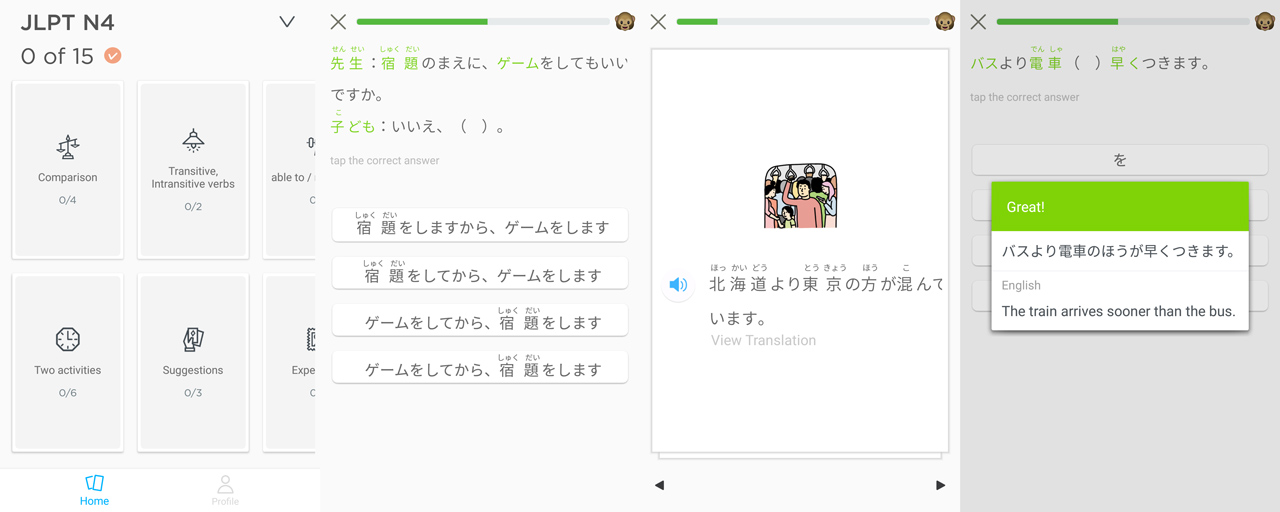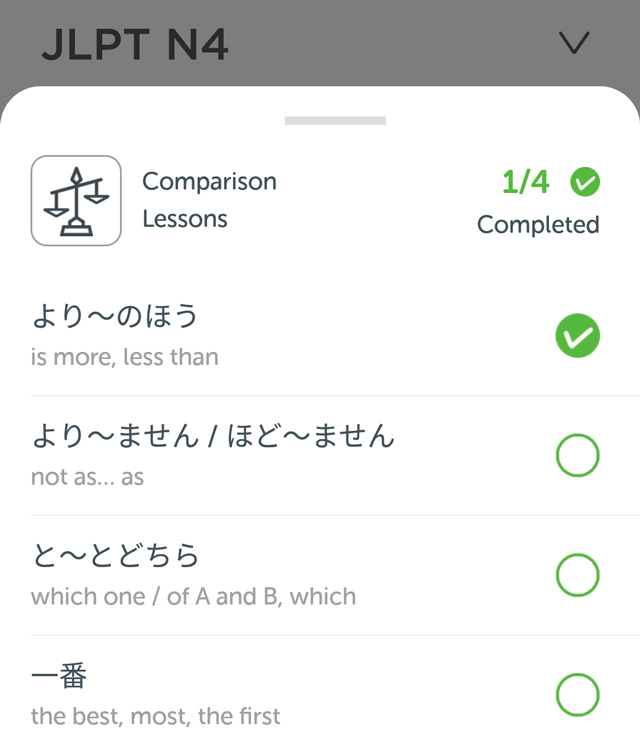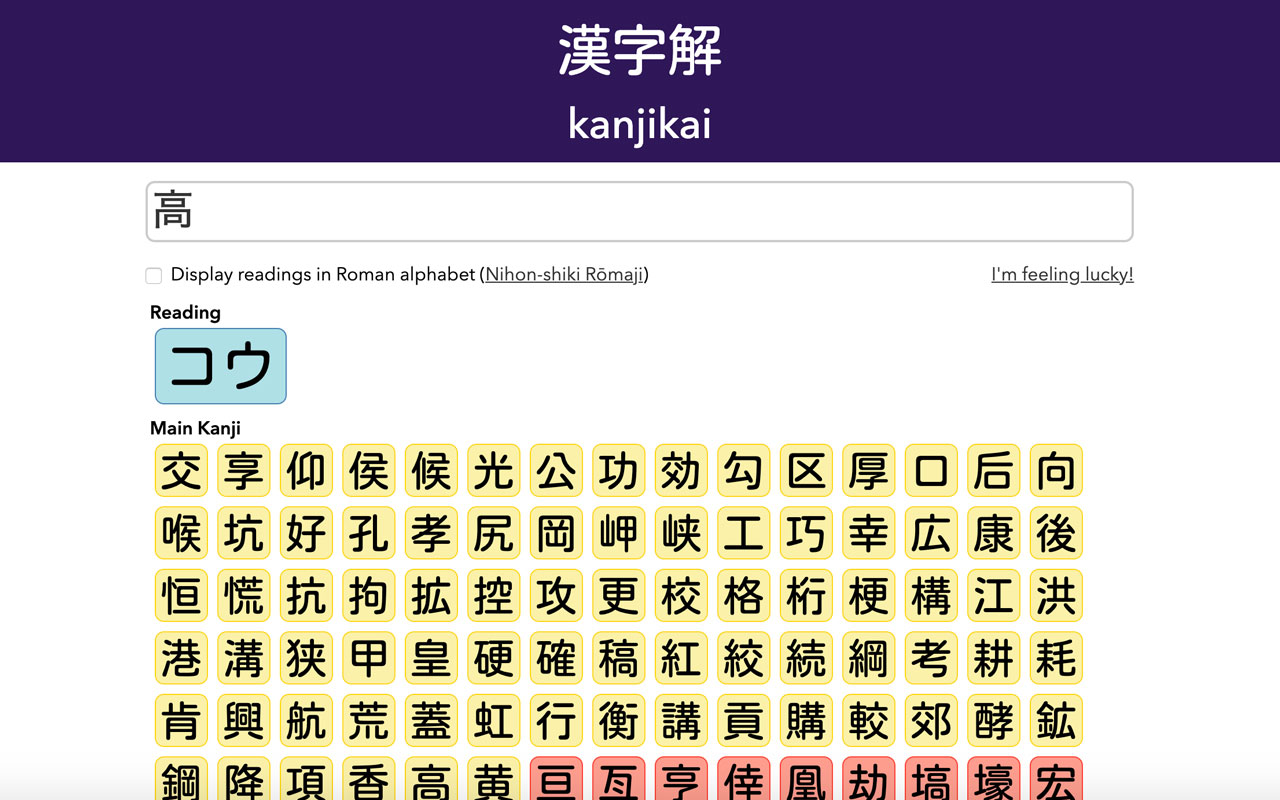May I present before you some new Japanese learning resources? I may?! Excellent, because last month had some real hits! Let's get right down to it.
JLPT Stories

JLPT Stories is a new podcast and companion site based in Shinjuku that provides stories in Japanese, labeled with their intended JLPT (Japanese Language Proficiency Test) level. Each three to four minute story is written and read by a native Japanese speaker at normal speed.
On the website, JLPT Stories provides Japanese transcripts for the stories, with grammar points relating to each story's JLPT level highlighted in bold. Under the transcript, each grammar point is linked to a free online resource with an English explanation. This includes sites ranging in quality and reliability, from Tae Kim's Guide to Japanese Test 4 You. Below that is a rough English translation.

The stories are meant to prepare you for the listening, grammar, and vocabulary sections of the JLPT by introducing a small number of new concepts at your level.
JLPT Stories suggests you begin by listening to each story first, without looking at either the transcript or the translation, in order to try to understand it on your own. Then you can choose to read with the transcript and study the grammar as you follow along. After that, you can check out the linked webpage to learn more about grammar points you're unfamiliar with.
The next step is to shadow along, reading the transcript with the speaker, trying to keep up with their pace and intonation. Each writer/reader is listed with their stories, so if you find you like certain authors and want to emulate their speech patterns, you can. New episodes come out (roughly) every Friday, US time, and the site has gathered a decent stockpile of N5–N1 stories to choose from.
If you follow JLPT Stories' language-shadowing process, the podcast is likely to help improve your listening, grammar, vocabulary, and speaking skills at the JLPT level of your choice. That's pretty choice!
Onomatopedia

This online onomatopoeia encyclopedia aims to teach Japanese onomatopoeia using illustrations, videos, and English equivalents.
Each onomatopoeic word is categorized into one of more than twenty-five different categories. Clicking on a word brings up a detailed page that includes pronunciation with audio, a short explanation, tags, example sentences, and images. These images either directly use the term or represent what it's used for (or with). Now and then Onomatopedia tosses in short manga pages, as well as further details explaining the usage of these terms versus other similar terms. All of this is provided both in English and Japanese.
You can search the site for specific words, choose by category, or list all the words that share tags. Some words span multiple categories and usages: words like ぶつぶつ, まったり, and ぴちぴち, for example, have multiple tabs with information for each usage.
Some entries also include YouTube videos explaining similar concepts, sounds, and how to use them. (There's also a monkey puppet that appears in them, if you're into that sort of thing.)
We do have one concern: none of Onomatopedia's images seem to cite where they come from. Some may be open-source or created by Imaginary Sound Creation, but because the site uses so many different styles of art, comics, and photography, we're a little wary. We hope they obtained them with permission and were curated specifically for the site.
Regardless, Onomatopedia is a useful tool that lets us all get ぺらぺら together!
Bunpo: Android

Bunpo for Android is a Japanese grammar study app that was previously released on iOS. Covering JLPT N5 to N1, it's seriously packed with content—and the polished illustrations and UI are a nice touch too!
When you launch the app, choose a JLPT level or basic kana lesson (the app also teaches hiragana/katakana if you're a beginner). You'll see a collection of cards containing grammar lessons you can study and review in any order.

First, as you swipe through cards, you're taught each grammar point with explanations and example sentences. If you're having trouble reading the sentences, example audio is available (courtesy of an okay-sounding robot voice) as well as optional English translations. After that, you're immediately quizzed with a series of multiple-choice and choose-the-word-order questions.
For an app, Bunpo's explanations + exercises are pretty long, which helps to make up for the lack of variety and the multiple-choice-iness of the review tests. The Bunpo download page makes claim to 1,700 example sentences and 8,000 quiz questions total, all of which you can access offline.
Bunpo has a few shortcomings: wonky formatting errors sometimes cut off the ends of sentences or squish furigana together. And speaking of furigana, there is an on/off toggle, but it's not clearly marked (hint: you have to click the monkey in the top-right corner).
Still, Bunpo offers a ton of quality content for a no-cost, ad-free app. It won't replace the kind of lengthy and detailed grammar explanations you'll find in textbooks like Genki, but it's great for introducing new concepts quickly and giving you grammar practice on the go. This is one to keep on your home screen.
Kanjikai

With rounded-corner design, cute typeface, and soft highlight colors, Kanjikai is a new kanji dictionary with an inviting look that makes your kanji search experience lots of fun.
And when we say "kanji search experience," we mean kanji only! Searching in English gets you zero results, and searching for a Japanese word will give you results only for the first kanji in the word. (Searching 面白い, for example, turns up results just for 面.)
With rounded-corner design, cute typeface, and soft highlight colors, Kanjikai is a new kanji dictionary with an inviting look.
That said, the search results you do get offer up a lot of info: readings (both on'yomi and kun'yomi) and meanings, of course, but also JLPT grade, Joyō grade, stroke number, unicode, and, when applicable, nan'ori—kanji used for names. Below all this is a list of words that use the target kanji, complete with their own readings and meanings. If you want the kind of rabbit-hole experience so many dictionaries offer, click any kanji in any word to go to that entry. Even kanji readings are clickable!
When you're after information about a certain reading rather than a kanji character, search in hiragana for kun'yomi results and in katakana for on'yomi.
Overall, Kanjikai is a fine kanji dictionary to bookmark and fun to navigate as well. Use it to explore kanji you know, and see how they're connected to different words or characters.
Did you enjoy these beautiful May resources? We sure did, but we probably probably missed a few. Did you discover a great new Japanese learning tool you want the world to know about? Let us know by email (hello@tofugu.com) or via Twitter (@tofugu). We'll tell everyone we know about it while sneaking in some praise for you too! 😃
